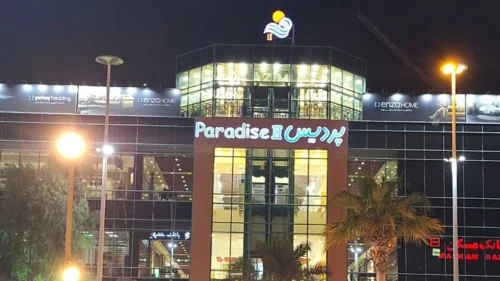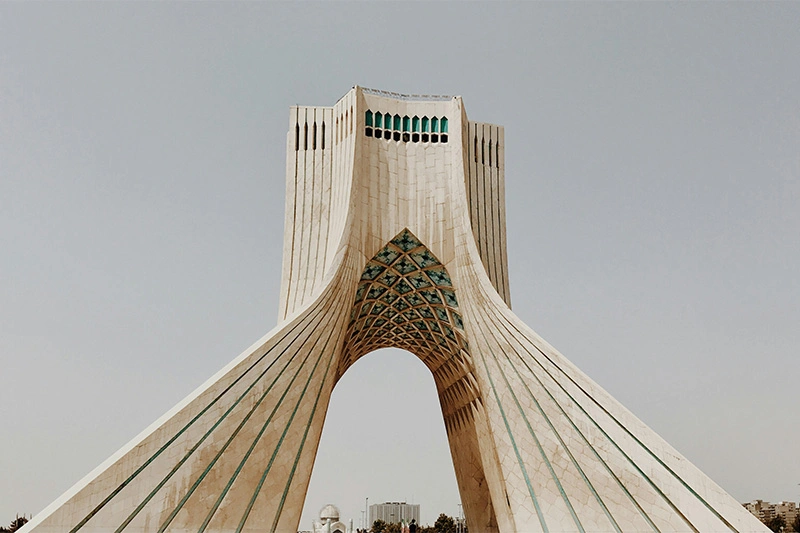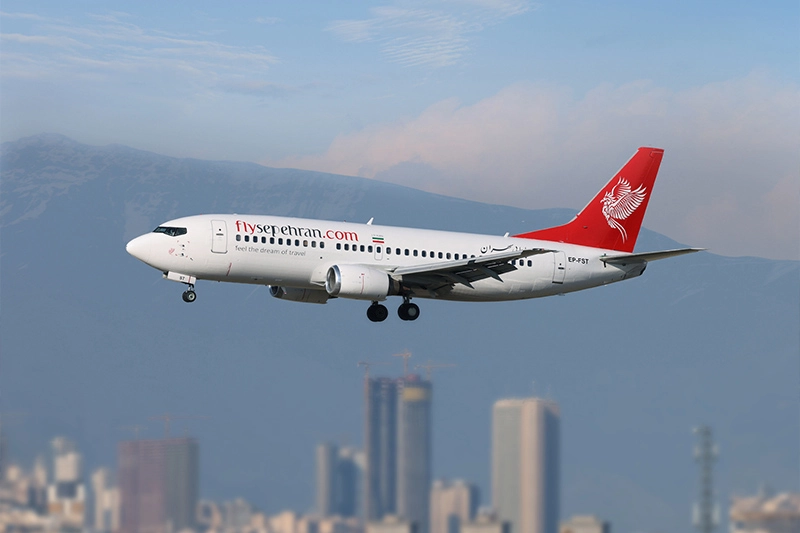
وبلاگ سپهران | Travel Guide | Iran Travel Guide: Tips for Visiting Iran
If you’ve been living abroad for years and have now decided to visit Iran—whether to reunite with family or to explore the country’s beauty—this guide is for you.
Iran is a land of diverse climates, rich culture, and countless travel destinations. However, if you’ve been away for a long time, you may have forgotten—or missed—some of the essential tips and changes in domestic travel within Iran.
In this comprehensive travel guide, we aim to provide practical information tailored to your needs—from trip planning and choosing the best time and destination, to details about accommodation, transportation, food, costs, and safety tips. Whether it’s your first return after years or a regular visit, this guide is here to make your journey smoother, safer, and more enjoyable.

Iran’s extraordinary climatic diversity makes timing a crucial factor in shaping a successful travel experience. While the mountain peaks in the west may be snow-covered, the southern coasts might be sunny and warm at the very same time. Understanding regional weather conditions is crucial for determining the optimal time to visit.
| Region | Major Cities | Best Time to Visit |
|---|---|---|
| Northern Iran | Rasht, Lahijan, Mazandaran | Spring and early summer |
| Southern Iran | Bandar Abbas, Qeshm, Kish | Autumn and winter |
| Eastern Iran | Zahedan, Birjand, Lut Desert | Autumn and spring |
| Western Iran | Kermanshah, Hamedan, Sanandaj | Spring and autumn |
| Central Iran | Tehran, Isfahan, Shiraz | Spring and autumn |
Every corner of Iran offers a different story for travelers—from sacred cities steeped in spirituality to historical and cultural hubs. Iran is like a canvas rich with color and variety. Below are some of the most remarkable towns worth visiting:
Tehran, the capital of Iran, is a blend of modernity and history, offering a diverse range of experiences and attractions. Some of the top places to visit in Tehran include:
Mashhad is not just a religious city—it’s rich in culture and history, as reflected in its many attractions:
Known as the jewel of Iranian architecture, Isfahan is a city where art and history meet. Top attractions include:
Shiraz is a city of cultural and literary richness, and its attractions reflect its glorious past:
Tabriz has long been a center of commerce and culture. Its tourist attractions reflect its deep historical and cultural roots:
Northern Iran is one of the most popular regions for both domestic and international travelers, thanks to its mild climate, lush natural scenery, and geographic diversity, ranging from forests and mountains to beaches. Whether you’re seeking peace by the sea, adventure in the woods, or the calm of traditional villages, northern Iran offers it all. Here are some of the must-see destinations:
Mazandaran lies along the southern shores of the Caspian Sea and is one of the most popular regions in northern Iran, renowned for its stunning natural diversity.
Gilan is a lush province blanketed in forest and full of cultural charm. It’s a favorite among nature lovers.
Located in the eastern part of the Caspian Sea region, Golestan is known for its cultural and ecological diversity.
To reach northern Iranian cities such as Rasht, Sari, or Gorgan, it’s best to first arrive in Tehran, which is the closest international hub and the main gateway for traveling north. Additionally, you can fly directly from Mashhad to Rasht via flysepehran.
Due to the geographical proximity of the provinces of Mazandaran, Gilan, and Golestan, it’s possible to plan a trip that covers several tourist destinations over a few days. For example, you can start your journey from Tehran and head towards Ramsar via the coastal road. Then, continue to Masuleh and Rasht in Gilan Province, making stops at attractions like Rudkhan Castle along the way. After that, you can travel eastward toward Golestan Province to explore Neka Forest and Golestan National Park.
It is recommended to plan this trip over 7 to 10 days to enjoy the attractions of each region fully. Additionally, using a private car or hiring a vehicle with a local driver is advisable, especially since many mountain routes and rural villages are difficult to access by public transportation.
To reach northern Iran, you first need to arrive in Tehran, the capital city and the main entry point into the country. From there, you can easily travel to the northern provinces such as Mazandaran, Gilan, and Golestan. Suppose you’re flying in from Dubai, Kuwait, Muscat, Istanbul, Tbilisi, or Yerevan. In that case, flysepehran offers regular direct flights to Imam Khomeini International Airport in Tehran, making the start of your journey much more convenient.
After arriving in Tehran, there are several options for reaching northern Iran:
Iran offers a wide range of efficient and diverse transportation infrastructure, making it easy to move around within major cities or travel between provinces. Whether you’re arriving for the first time or returning after years abroad, here’s everything you need to know before landing at one of Iran’s airports:
| Route | Transportation Options | Important Notes |
|---|---|---|
| From airport to city | – Airport taxi – Hotel transfer services – Online taxi apps |
– Fares are usually fixed or vary by distance – It’s recommended to arrange with your hotel in advance – Some apps operate directly at airports. |
| Inner-city | – Yellow taxis –Taxi apps– Metro – Public buses |
– Meters may not be used; agree on price beforehand – Cash payment is common – Metro is fast and affordable – Buses require basic Persian |
| Intercity | – Intercity buses (regular or VIP) – Trains– Domestic flights |
– VIP buses are very comfortable |
Food is a key element of any journey to Iran. Persian cuisine is a blend of simplicity and rich flavors, featuring locally sourced ingredients and time-honored cultural traditions. Most importantly, all local Iranian dishes are halal, which is especially significant for Muslim travelers.
Persian cuisine is based on the use of fragrant herbs, aromatic rice, tender meats, and mild spices. Flavors are balanced and typically not spicy. Most dishes are served with yogurt, traditional bread, or local salads.
One of the key advantages of traveling to Iran is that it is a budget-friendly destination, suitable for a wide range of travelers. Compared to neighboring countries, prices in Iran are generally more affordable across accommodations, food, and transportation. Here is a rough estimate of what an average traveler might spend during a mid-range trip to Iran.
| Category | Estimated Cost |
|---|---|
| Flight Ticket | $100–$350 (round-trip), depending on city and travel season |
| Accommodation | – Budget hotels (3-star): $10–$30/night– Mid-range hotels (4-star): $30–$70/night– Luxury hotels (5-star): $70–$150/night– Furnished apartments/guesthouses: ideal for families |
| Food & Drinks | – Light meal in a local restaurant: $2–$4– Full meal in a mid-range restaurant: $5–$8– Fine dining dinner: $10–$20– Bottled water, tea, or juice: under $1 |
| Inner-city Transportation | – Metro or bus: under $0.5 per trip– City taxi: $1–$3– Online apps: affordable and common– Private car with driver: prices vary |
| Intercity Transportation | – VIP bus ticket: $5–$10– Train ticket (economy): $8–$15– Domestic flight: $20–$50 depending on destination |
| Entry Fees for Attractions | – Museums and tourist sites: $1–$5– Religious sites: Free– Some parks and cultural centers: symbolic fees |

For many travelers, the actual journey begins the moment they board the plane, not just when they arrive at their destination. That’s why choosing an airline that meets expectations in terms of comfort, reliability, and service is essential. In this regard, flysepehran has become a popular choice for those planning to visit Iran.
Sepehran operates direct and regular flights from several major international cities to Iran’s key airports, including Tehran and Mashhad. The airline’s network is designed with a deep understanding of travelers’ needs, whether for religious, touristic, or family trips.
Additionally, frequent flyers can benefit from the RedMiles loyalty program, allowing them to collect points and redeem them for free tickets or premium services. Whether it’s your first time visiting Iran or you’re a regular traveler, choosing Sepehran ensures your journey starts smoothly, professionally, and reliably. Your destination is Iran, and your journey begins with Sepehran.
If you plan to travel to Iran, the country’s major airports provide reliable options for reaching your destination. Below are some of the most important international airports in Iran:
Flights from these airports generally operate regularly. For travelers’ convenience, it is recommended to book tickets in advance, especially during peak travel seasons.
Visiting Iran is more than just a trip—it’s a rich experience that encompasses thousands of years of civilization, stunning geographic diversity, magnificent architecture, and warm hospitality. In this travel guide, we aimed to provide essential information for exploring Iran, from entry requirements to must-visit cities, transportation, and insights into daily life and culture.
With reliable and direct flights now available to many cities across Iran, visiting this country has become easier than ever. Now it’s your turn: choose the right time and plan your journey based on your personal interests and preferences. If you are looking for a safe and diverse destination, Iran could be the perfect choice for your next adventure.